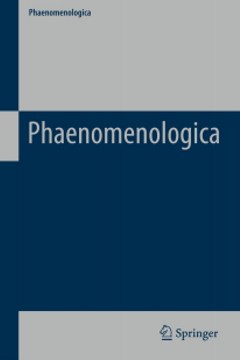Repository | Book | Chapter

(1995) Synthesis and backward reference in Husserl's Logical investigations, Dordrecht, Springer.
LU VI
five elements in Husserl's account of the synthesis of epistemic fulfilment
Jay Lampert
pp. 125-181
The first part of LU vi is concerned to describe the connection between meaning-intention and meaning fulfilment. It is meant to explain (1) how a subject comes to know when an object is truly before him, and (2) how a subject can identify a singular object in the face of a plurality of experiences. Husserl's analyses describe graduated chains of fulfilment whereby a meaning-intention is brought step by step to adequate intuition: All expressions "aim at" (Abzielen) the intuitions which would fulfill their meaning-intentions, and as those intuitions are achieved, the identity of the meant objects is realized in experience and the experiencing subject is brought into the full cognitive presence of the objects themselves. These achievements, the combinations of meaning-intentions and meaning-fulfilments, carry out the syntheses of identification and epistemic fulfilment.
Publication details
DOI: 10.1007/978-94-015-8443-2_7
Full citation:
Lampert, J. (1995). LU VI: five elements in Husserl's account of the synthesis of epistemic fulfilment, in Synthesis and backward reference in Husserl's Logical investigations, Dordrecht, Springer, pp. 125-181.
This document is unfortunately not available for download at the moment.



